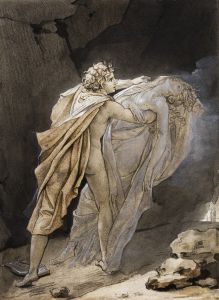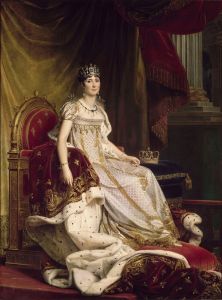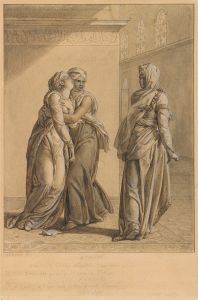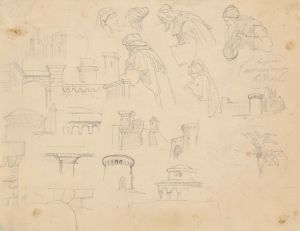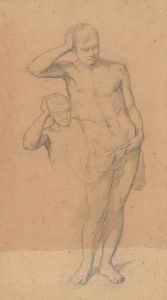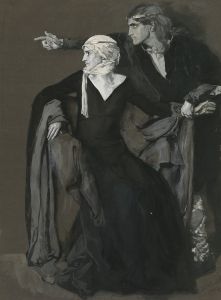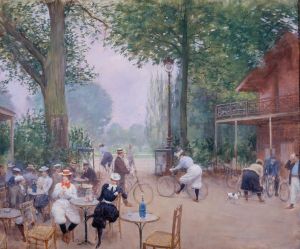
Carolina Ferdinanda Louisa of Sicily . Wife of Charles Ferdinand, Duc de Berry, in the Park of Bagatelle in the Bois de Boulogne
A hand-painted replica of François Gérard’s masterpiece Carolina Ferdinanda Louisa of Sicily . Wife of Charles Ferdinand, Duc de Berry, in the Park of Bagatelle in the Bois de Boulogne, meticulously crafted by professional artists to capture the true essence of the original. Each piece is created with museum-quality canvas and rare mineral pigments, carefully painted by experienced artists with delicate brushstrokes and rich, layered colors to perfectly recreate the texture of the original artwork. Unlike machine-printed reproductions, this hand-painted version brings the painting to life, infused with the artist’s emotions and skill in every stroke. Whether for personal collection or home decoration, it instantly elevates the artistic atmosphere of any space.
François Gérard's painting "Carolina Ferdinanda Louisa of Sicily, Wife of Charles Ferdinand, Duc de Berry, in the Park of Bagatelle in the Bois de Boulogne" is a notable work that captures a moment in the life of a significant historical figure. Carolina Ferdinanda Louisa, also known as Princess Caroline of Naples and Sicily, was born on November 5, 1798, in Palermo, Sicily. She was the daughter of King Francis I of the Two Sicilies and his wife, Maria Clementina of Austria. Her marriage to Charles Ferdinand, Duke of Berry, a member of the French royal family, linked her to the Bourbon Restoration in France.
The painting by François Gérard, a prominent French painter known for his portraits of nobility and significant figures of his time, depicts Princess Caroline in the serene setting of the Park of Bagatelle, located in the Bois de Boulogne, Paris. Gérard was a favored artist among European aristocracy, and his works are celebrated for their elegance and attention to detail, capturing both the likeness and the status of his subjects.
Caroline's marriage to Charles Ferdinand took place on June 24, 1816, and it was a union that held political significance, aimed at strengthening the ties between the French and Neapolitan royal families. The couple had four children, although only two survived infancy: Louise Marie Thérèse of Artois and Henri, Count of Chambord, who was a pretender to the French throne.
The setting of the painting, the Park of Bagatelle, is a historic garden located in the Bois de Boulogne, which was originally created in 1775. The park is known for its beautiful landscaping and was a popular location for the French aristocracy to enjoy leisure time. Gérard's choice to depict Caroline in this setting highlights her status and the leisurely lifestyle associated with her position.
François Gérard's portrayal of Caroline is characteristic of his style, which often emphasized grace and poise. The painting likely captures Caroline in a moment of tranquility, reflecting both her personal elegance and the refined environment of the French court during the Bourbon Restoration. Gérard's ability to convey the personality and status of his subjects made him one of the most sought-after portraitists of his era.
Caroline's life, however, was marked by tragedy. Her husband, Charles Ferdinand, was assassinated on February 14, 1820, an event that had significant political repercussions in France. Following his death, Caroline lived a relatively private life, focusing on her children and maintaining her connections with the royal families of Europe.
The painting remains an important historical artifact, offering insight into the life of a princess who navigated the complex political landscape of early 19th-century Europe. It also serves as a testament to François Gérard's skill as a portrait artist, capturing not only the likeness of his subjects but also the essence of their social standing and personal stories.






